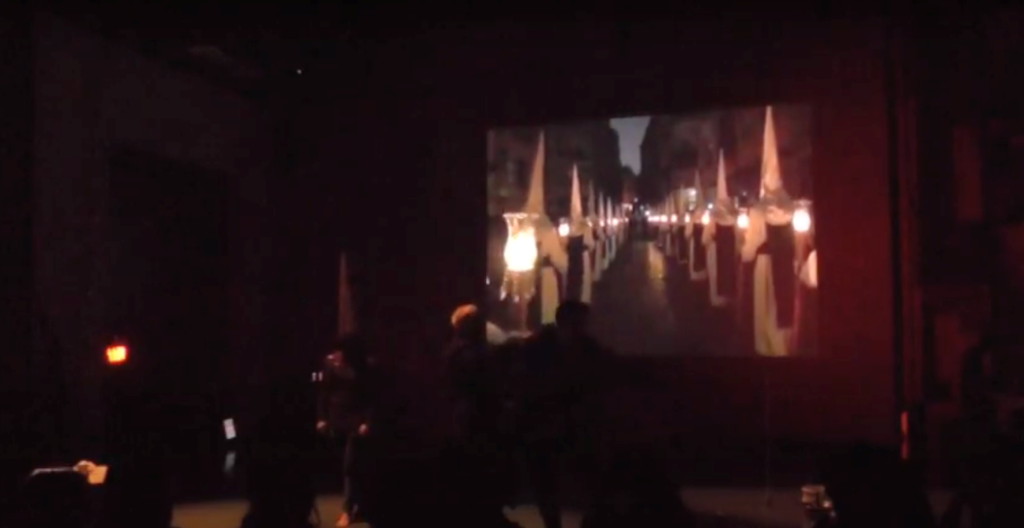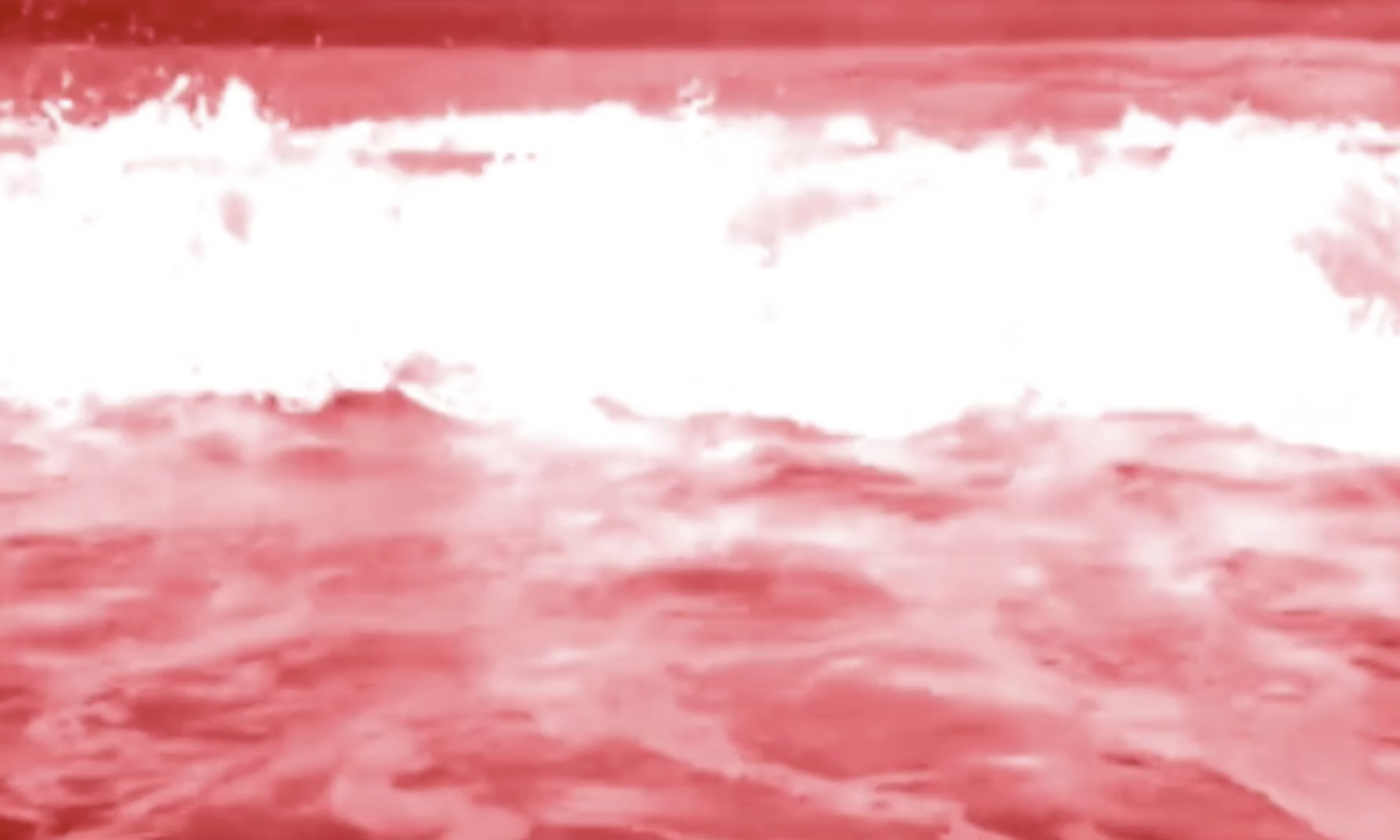Vodoo Macbeth
Date: April 2017
Location: The Shell studio (Parkside building, Birmingham City University)
Format: Open rehearsal / physical multimedia performance
Participants: Aleksandar Dundjerovic, Stephen Simms, Daniel Blanco, Maria Sanchez, Gareth Somers
Description:
In the first cycle, we worked on the idea of the narrative of Macbeth as a visual and physical experience shared with audiences in the format of group ritual/religious procession. The performance was an open rehearsal and, at the end, the audience was invited to a Q&A session. We tested different ways of telling stories to the audience through fragmented experiences of the dramatic text, using physical and visual images and sound. We explored group improvisation, ritualistic images, triggered by the dramaturgy of Macbeth (witches, ghosts, visions, the prophecy of future). Reading of tarot cards came from one of these sessions and became the key to the beginning of the performance from Cycle 3 onwards. We also explored the performativity of voodoo and candomblé.
Research enquiry:
The starting cycle engaged with the fragments of Shakespeare’s text and explored a collaboratively created narrative organized around themes of supernatural, witchcraft, ghosts, dreams, madness and ritual procession as a passage from one ‘real’ world into an inner and imaginary world. How to approach Shakespeare’s Macbeth as a physical and audio/visual experience shared with audiences? To explore the format of an open rehearsal through which we can test different ways of telling stories. To investigate how to involve the audience into the participatory experience of ritual through a mixture of fragmented dramatic text, perspectives on narrative, and poetic images found in the text of Macbeth. These references also triggered the investigation of visual and spatial dramaturgy.
Research background:
The creative method and reference point for the work in this cycle and, subsequently all cycles, was Robert Lepage’s theatricality and RSVP/Repère Cycles combined with the Viewpoints and experience of collaborative interdisciplinary Brazilian antropophagic theatre-making. We also wanted to explore Elizabethan rehearsal strategies (using scrolls and group creation) and examine the mix-authorship approach in the making of Shakespeare’s plays. In addition, Orson Welles’ production of Voodoo Macbeth (1936) became a reference point for our adaptation of the text. In preparation for working with Teatro Os Satyros, we wanted to look into the different cultural appropriation of Macbeth in Brazil.
The underpinning philosophy for cycle #1 as the start of the creative research project was cultural anthropophagy, which has an actual application on director’s theatre in Brazil and was also relevant to Shakespeare’s use of various existing materials for his theatre. The founding Brazilian director-authors, such as Zé Celso, Antunes Filho and Gerald Thomas, share approaches to anthropophagy as a “negation” of realism of foreign cultures (colonial) through a “transformation” of the source material.
Methodology: Theatre of Anthropophagy
Theatre of Anthropophagy is a transformation that results in eating other relevant artistic and cultural forms. The Brazilian culture of anthropophagy is the meeting of two philosophical systems of thinking about life: the indigenous, through dances, rituals and ceremonies; and the European, through Catholicism and evangelization of society. Out of this encounter came the idea of mixing influences and “devouring”: taking over the properties of a source’s arts or culture and making them your own. The theatre of Anthropophagy is simultaneously both a process of intercultural appropriation and collaborative devising. Anthropophagic theatricality brings to performances a total theatre experience, immediacy and immersion, ritual dance and ceremonies (such as the performing of carnival or Candomblé rituals), and communal sharing. The Brazilian theatre context combines native ceremonies with elements of anti-realism and the devouring of various artistic and cultural sources.
Outputs and evaluation:
The output was a 45-minute performance that took place at the Shell Multimedia Studio at Royal Birmingham Conservatoire in front of acting students, staff and invited practitioners and scholars. It was an open rehearsal followed by a Q&A session.
The evaluation process involved reviewing the recording of the performance and the feedback and suggestions, which indicated to the group possible new developments in the dramaturgical and spatial investigation. The audience’s comments about the experience of the procession and the rituals led us into the key reference points for the second cycle, where the audience’s experience of the procession was translated into the way we use promenade to experience space and installation.
After the first cycle, the key reference points for future development became Act 3 Scene 4 ‘Feast scene’, which was turned into a party at Macbeth’s in celebration of him becoming king; the relationship with Lady Macbeth, and development of Lady Macbeth’s story; ghosts, witches and supernatural, and the exploration of the audience as participants in the narrative of the play. From the group discussions and feedback, it became clear that in future developments, the character of Macbeth would be the one telling the story to the audience in an autobiographical way, using site-specific and visual arts to create an environment of the play.
Video of the performance at the Shell Multimedia Performance space. April 2018.

References
Dundjerovic, A. ‘Theatre of Antropophagy in Dundjerovic, A., Ramos, L.F. Editors (2019) Brazilian Performing Arts. Madrid, Spain: Abada Editores.
